This week, David, Niall and the team are working the strip wires, on/off grazing, and all the tricks of wet weather grazing to get milking cows out for some few hours of grazed grass in between milkings at Greenfield farm.
The peak of calving has passed, so there is more of a chance to get wires set up, etc, but workload in the fields gets busier from now on.
David was lucky to get the second round of fertiliser out last week so that kick of nitrogen is working away now to keep the grass coming for late March and early April grazing.
With better fertility in the herd and short-gestation sires, calving was starting in late January and often 10% of the herd were calved before 1 February
The farm cover this week was measured at 1,322kg, a growth rate of 8kg/day and almost 36% of the farm area will have been grazed by the end of the week.
The start of breeding was pushed back last year to 1 May. Previously, it would have been around 22 to 26 April.
With better fertility in the herd and short-gestation sires, calving was starting in late January and often 10% of the herd were calved before 1 February.
The delayed breeding start date delayed the calving start and as a result milk supply in February is down on previous years.
Milk supply February
Individual milk yields are very hard to gauge in February with new cows coming on the system every day and milk going for calves.
The supply for February was 1,911kg milk solids, which if we look back over the previous six years was the lowest February (average 3,817kg MS for previous six years). While not paid for yet, this is likely to bring in a cheque over €8,100. On average, the February cheque for the previous six years was €17,150.
Greenfield were the highest ever, with 4,437kg milk solids delivered, bringing the month’s cheque to €18,870
On the upside, December 2018 supplies were the best we ever had, and if you don’t get milk solids in February you must get them in December.
The December 2018 supply figures for Greenfield were the highest ever, with 4,437kg milk solids delivered, bringing the month’s cheque to €18,870.

Milking cows on Friday 1 March, Greenfield Kilkenny.
The balancing act is that milking into December essentially means milking March and April calvers to maximise days in milk.
The other issue with December milking on the likes of the Greenfield farm is that it is dependent on weather and grass supply as the farm is not set up for indoor milking.
Glanbia also has a seasonality scheme that requires 3% in February. Based on 2019 February supply, the farm won’t reach that threshold this year.
Breeding programme for 2019
While the focus remains on calving, preliminary discussions on the 2019 breeding season have taken place. Given the increased public scrutiny on all dairy herds and the value drop in dairy-bred bull calves, the intention from now on is to minimise the number of low-value dairy-bred bull calves born.

Fresh calvers in the milking parlour for the first time this year at the Greenfield Farm Kilkenny.
For this reason, the plan will be to explore the possibility of using sexed semen in the maiden heifers (using fixed-time AI), and use 150 conventional AI straws in the first 10 days of breeding in the main herd to get an additional 30 or so heifer replacement calves.
This should deliver 70 or 80 replacements for the herd. After that period of dairy AI, the intention is use beef AI sires across the herd.
One of the risks with this strategy is that conception rates of sexed semen will be lower. Hence potentially it might be wise to start breeding the heifers earlier than planned start date. If all heifers are calving earlier, then potentially colostrum supply could become an issue next spring. Might be worth freezing biestings now in anticipation.
The other challenge with this is that the quality of sexed AI sires might be limited. Given the comments above, the plan is that breeding start date will be in the region of 29 April – a few days earlier than the 2018 start date, and will continue for 11 to 12 weeks.
Additional measures
Given the increasing debate around livestock and indeed special challenges for dairy farmers in Ireland, the plan is that some additional measures and factors should be taken on board for the Greenfield farm. The objectives at the outset of the project were to discuss various technologies for optimising returns on a relatively low capital cost farm investment.
The key factors included were financial management, gradually increasing stocking rate as farm grass output went up, increasing milk solids sold as the herd matured, and looking at labour-saving alternatives such as more use of contractors, etc. All are works in progress.
However, given the wider national challenges on the environment, etc, Teagasc has suggested there are some additional measures that the Greenfield farm could harness and develop such as: (1) environmental footprint – nitrogen usage, biodiversity, etc; (2) animal welfare; (3) financial liquidity; and, (4) labour efficiency and LEAN management that are now more front and central than ever before.
The challenge with these new measure is that dairy farmers need to know what to measure, what is best practice and then identify targets and improve performance under each.
All the original measures set out at the start of the project still need to be front and centre as there is over €400,000 of long-term debt still to be paid.
Also this farm lost significant money last year as snow and drought considerably increased feed costs, running down all cash reserves.
The budget for 2019 suggests a break-even year after some capital development and an extra silage reserve is purchased.

Donegal bales of silage at Greenfield farm in Kilkenny. Pit silage has just been restarted at the right hand side of the pit.
Calving
Calving is going very well in fairness. David said they have assisted about 10 calvings from 229 calved to date – otherwise the cows work away.
David and Niall, along with Joe, a trainee farm manager, Niamh, a WIT student, and the night calver, are all on the roster at the moment.
The night calver covers the five weekday nights and then Niall and David share the other two.
David and Joe are working six days on and one off at the moment, with Niall on 12 on and two days off over this peak of calving. There are two milking at all times.
Heifer calves go to the contract-rearer about 14 days old, and some bull calves have been sold also to farmers and dealers who have been working with the farm for a good number of years. There were some stillbirths at the start of calving (11 from 150 calvings).
David traced it back potentially to an issue with feeding palm kernel meal to dry cows.
Palm kernel was purchased to replace some forage and seemingly it’s not best practice to feed it to dry cows near calving.
Silage use
The February grass supply drastically reduced the silage required but this wet start to March and demand increasing won’t be long about using silage on hand if wet conditions persist. The dry cows have been eating through heavy grass covers allowing the milkers stay on the lighter covers. The milkers are on 3kg of meal (16% protein at €285/t) in the parlour and grazed grass.
Read more
Greenfield Kilkenny: calving and grazing on track
Greenfield Farm: maximising February opportunities
This week, David, Niall and the team are working the strip wires, on/off grazing, and all the tricks of wet weather grazing to get milking cows out for some few hours of grazed grass in between milkings at Greenfield farm.
The peak of calving has passed, so there is more of a chance to get wires set up, etc, but workload in the fields gets busier from now on.
David was lucky to get the second round of fertiliser out last week so that kick of nitrogen is working away now to keep the grass coming for late March and early April grazing.
With better fertility in the herd and short-gestation sires, calving was starting in late January and often 10% of the herd were calved before 1 February
The farm cover this week was measured at 1,322kg, a growth rate of 8kg/day and almost 36% of the farm area will have been grazed by the end of the week.
The start of breeding was pushed back last year to 1 May. Previously, it would have been around 22 to 26 April.
With better fertility in the herd and short-gestation sires, calving was starting in late January and often 10% of the herd were calved before 1 February.
The delayed breeding start date delayed the calving start and as a result milk supply in February is down on previous years.
Milk supply February
Individual milk yields are very hard to gauge in February with new cows coming on the system every day and milk going for calves.
The supply for February was 1,911kg milk solids, which if we look back over the previous six years was the lowest February (average 3,817kg MS for previous six years). While not paid for yet, this is likely to bring in a cheque over €8,100. On average, the February cheque for the previous six years was €17,150.
Greenfield were the highest ever, with 4,437kg milk solids delivered, bringing the month’s cheque to €18,870
On the upside, December 2018 supplies were the best we ever had, and if you don’t get milk solids in February you must get them in December.
The December 2018 supply figures for Greenfield were the highest ever, with 4,437kg milk solids delivered, bringing the month’s cheque to €18,870.

Milking cows on Friday 1 March, Greenfield Kilkenny.
The balancing act is that milking into December essentially means milking March and April calvers to maximise days in milk.
The other issue with December milking on the likes of the Greenfield farm is that it is dependent on weather and grass supply as the farm is not set up for indoor milking.
Glanbia also has a seasonality scheme that requires 3% in February. Based on 2019 February supply, the farm won’t reach that threshold this year.
Breeding programme for 2019
While the focus remains on calving, preliminary discussions on the 2019 breeding season have taken place. Given the increased public scrutiny on all dairy herds and the value drop in dairy-bred bull calves, the intention from now on is to minimise the number of low-value dairy-bred bull calves born.

Fresh calvers in the milking parlour for the first time this year at the Greenfield Farm Kilkenny.
For this reason, the plan will be to explore the possibility of using sexed semen in the maiden heifers (using fixed-time AI), and use 150 conventional AI straws in the first 10 days of breeding in the main herd to get an additional 30 or so heifer replacement calves.
This should deliver 70 or 80 replacements for the herd. After that period of dairy AI, the intention is use beef AI sires across the herd.
One of the risks with this strategy is that conception rates of sexed semen will be lower. Hence potentially it might be wise to start breeding the heifers earlier than planned start date. If all heifers are calving earlier, then potentially colostrum supply could become an issue next spring. Might be worth freezing biestings now in anticipation.
The other challenge with this is that the quality of sexed AI sires might be limited. Given the comments above, the plan is that breeding start date will be in the region of 29 April – a few days earlier than the 2018 start date, and will continue for 11 to 12 weeks.
Additional measures
Given the increasing debate around livestock and indeed special challenges for dairy farmers in Ireland, the plan is that some additional measures and factors should be taken on board for the Greenfield farm. The objectives at the outset of the project were to discuss various technologies for optimising returns on a relatively low capital cost farm investment.
The key factors included were financial management, gradually increasing stocking rate as farm grass output went up, increasing milk solids sold as the herd matured, and looking at labour-saving alternatives such as more use of contractors, etc. All are works in progress.
However, given the wider national challenges on the environment, etc, Teagasc has suggested there are some additional measures that the Greenfield farm could harness and develop such as: (1) environmental footprint – nitrogen usage, biodiversity, etc; (2) animal welfare; (3) financial liquidity; and, (4) labour efficiency and LEAN management that are now more front and central than ever before.
The challenge with these new measure is that dairy farmers need to know what to measure, what is best practice and then identify targets and improve performance under each.
All the original measures set out at the start of the project still need to be front and centre as there is over €400,000 of long-term debt still to be paid.
Also this farm lost significant money last year as snow and drought considerably increased feed costs, running down all cash reserves.
The budget for 2019 suggests a break-even year after some capital development and an extra silage reserve is purchased.

Donegal bales of silage at Greenfield farm in Kilkenny. Pit silage has just been restarted at the right hand side of the pit.
Calving
Calving is going very well in fairness. David said they have assisted about 10 calvings from 229 calved to date – otherwise the cows work away.
David and Niall, along with Joe, a trainee farm manager, Niamh, a WIT student, and the night calver, are all on the roster at the moment.
The night calver covers the five weekday nights and then Niall and David share the other two.
David and Joe are working six days on and one off at the moment, with Niall on 12 on and two days off over this peak of calving. There are two milking at all times.
Heifer calves go to the contract-rearer about 14 days old, and some bull calves have been sold also to farmers and dealers who have been working with the farm for a good number of years. There were some stillbirths at the start of calving (11 from 150 calvings).
David traced it back potentially to an issue with feeding palm kernel meal to dry cows.
Palm kernel was purchased to replace some forage and seemingly it’s not best practice to feed it to dry cows near calving.
Silage use
The February grass supply drastically reduced the silage required but this wet start to March and demand increasing won’t be long about using silage on hand if wet conditions persist. The dry cows have been eating through heavy grass covers allowing the milkers stay on the lighter covers. The milkers are on 3kg of meal (16% protein at €285/t) in the parlour and grazed grass.
Read more
Greenfield Kilkenny: calving and grazing on track
Greenfield Farm: maximising February opportunities







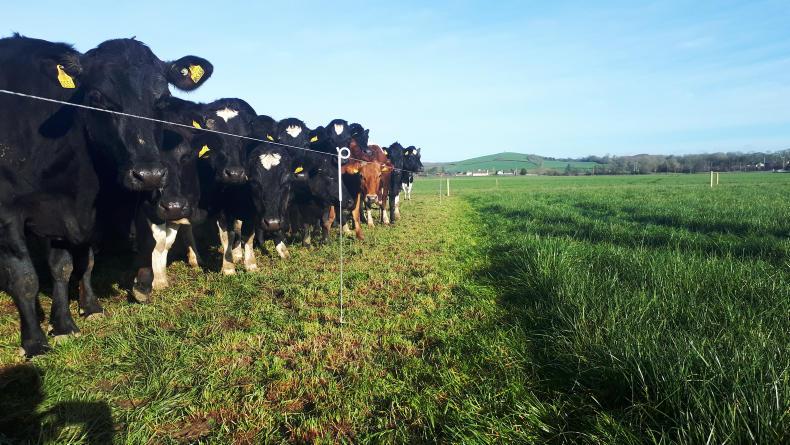
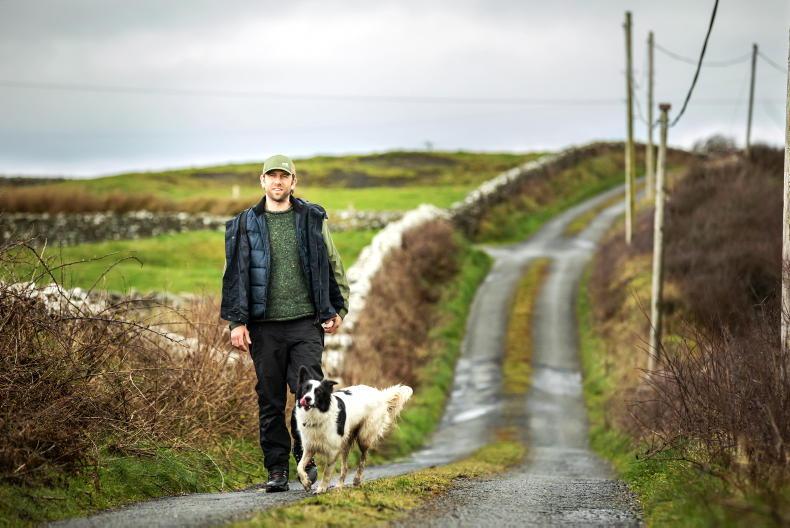

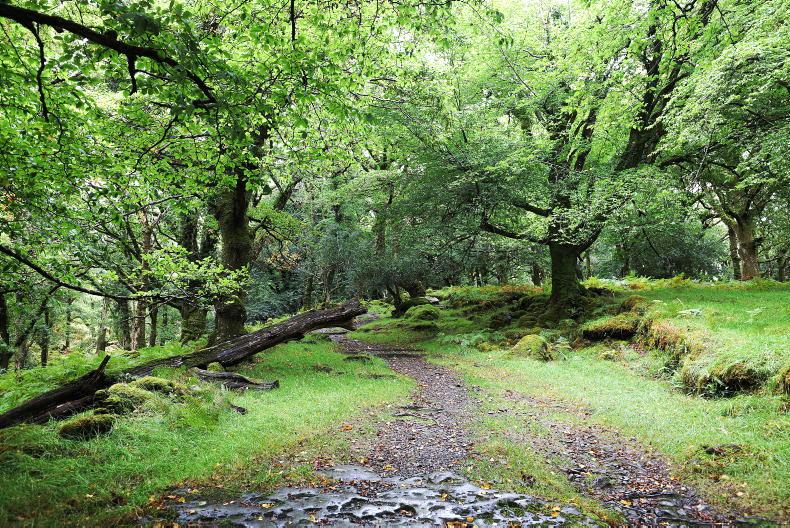
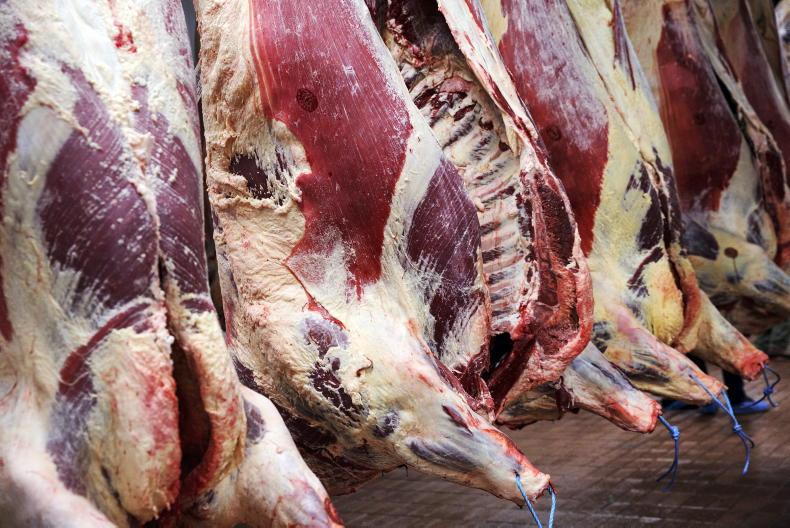
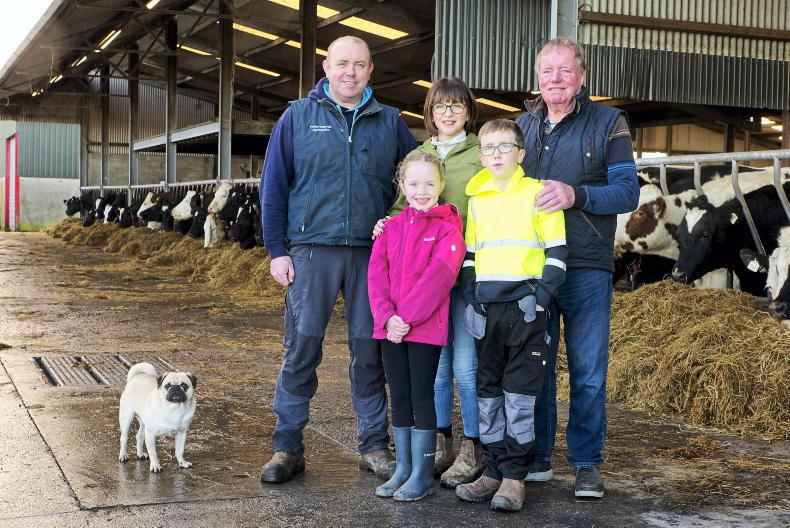
SHARING OPTIONS